|
Our Ancestral Heritage & Heraldic Story
The Mulcaster’s Story
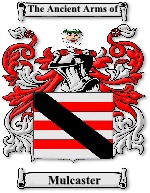 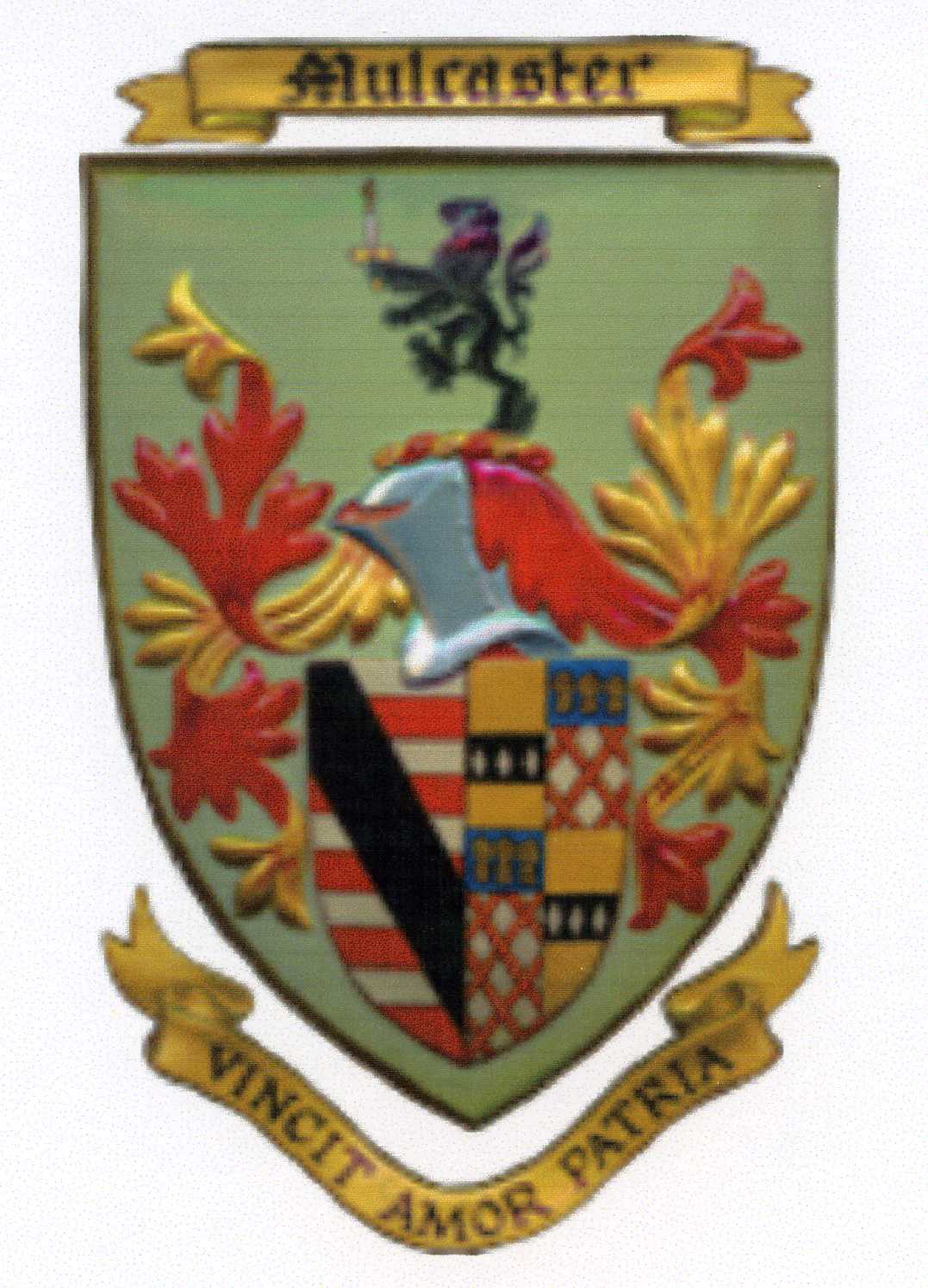 We have traced our ancestors back on my mother’s side to Sir Richard Mulcaster in 1093 eight years after the then King William 1 of England (William the Conqueror) instituted the “Domesday Book”. Among the items recorded were the names and landholdings of every county and shire and used by the early Kings of Britain to determine the rate of taxation of their subjects. It is the most important source of English history. And is the beginning of accurate and systematic record keeping in this country. All ancient English titles and deeds begin here, as well as many family names. There are variations of the Mulcaster family name including: Muncaster, Moncaster, Molecaster and others. But the name was first found in Cumberland where they were seated from early times and the first records appeared on the early census rolls from which has evolved the Mulcaster tree below. We have traced our ancestors back on my mother’s side to Sir Richard Mulcaster in 1093 eight years after the then King William 1 of England (William the Conqueror) instituted the “Domesday Book”. Among the items recorded were the names and landholdings of every county and shire and used by the early Kings of Britain to determine the rate of taxation of their subjects. It is the most important source of English history. And is the beginning of accurate and systematic record keeping in this country. All ancient English titles and deeds begin here, as well as many family names. There are variations of the Mulcaster family name including: Muncaster, Moncaster, Molecaster and others. But the name was first found in Cumberland where they were seated from early times and the first records appeared on the early census rolls from which has evolved the Mulcaster tree below.
Heraldic Crest: An old man's head ducally crowned.
Coat of arms: A shield barry of six silver and red with a black bend.
The Ancient Arms of Mulcaster : As depicted on the left before family bonding through marriage as shown on the right.
The Family Motto : VINCIT AMOR PATRIA Translated means: “My beloved country will conquer”
The Royal Link: The Mulcaster’s fought with the then King Edward during the “War of the Roses” and later linked in marriage with Richard of York, the link
The legend of the Mulcaster Name and the link to the Penningtons:
An extract from the Pennington research - The legend of the founding of the Mulcaster family name says that Benedict’s son David became known as David de Mulcaster, thus establishing the surname Mulcaster when he gave his children that name.
There was a David de Mulcaster, and he did own significant nearby property in the early 1200s. The Mulcaster family, like the Mulcaster/Muncaster Penningtons, were knights. Their arms are quite different from those of the Penningtons. It would appear that the Mulcaster fee was substantial and old by the 1200s, and therefore unlikely to be attached to the Pennington castle. According to the Cumberland-Westmorland Antiquarian and Archaeological Society, “In 1242 Furness Abbey [part of which became Pennington property] added another 14,000 acres to its mountain territory with the acquisition of upper Eskdale. This estate was the result of exchange with David de Mulcaster who received one of the abbey's properties. Monk Foss (1185) situated at the foot of the steep western slope of Black Combe”. Whatever the origin of the Mulcaster name and the connection between the two families, the Mulcaster family did have holdings in the region, and there was commerce and friction between them and the Penningtons over a long period. Several of the lords Pennington and Mulcaster served as sheriff at various times.
Mulcaster Links
more from the research...
Mulcaster Family Tree
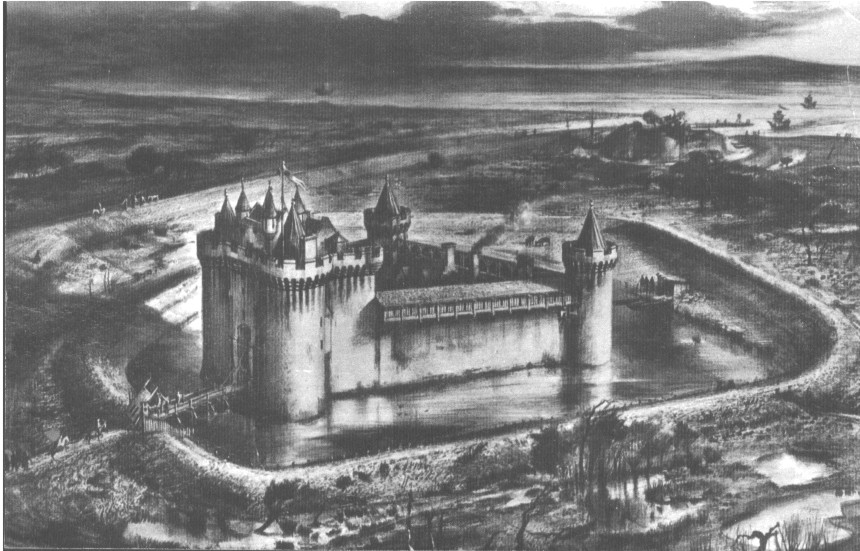 THE FAMILY SEAT THE FAMILY SEAT
Brackenhill Castle was situated on the banks of The river Lyne, about 4 miles east of Longtown, and was a large old moated Castle built in the form of a square (pictured right circa 1093). today there remains Brackenhill Tower a unique example of a Scottish vernacular style tower house located in an English county. Formally this area was known as the Debatable Lands. An area notorious for its inter-family feuds and cross border allegiances, neither Scotland nor England had any control over the Debatable Lands and, as the name suggests, neither country was keen to claim this lawless area.
The tower was built in 1584 by the infamous border reiver Ritchie Graham on the site of an earlier tower, perhaps dating back to the 13th century. All other tower houses of this style ended up being officially Scottish once the border was drawn up, leaving Brackenhill a unique example of a Scottish clan tower house, built in the Scottish style but on English soil.
Ritchie Graham was a notorious border reiver at the height of reiving along the border (Reiv – means to steal). The reiving period is roughly categorised as 1450 - 1610 and the history is a mixture of fact and folk-law. Reivers were clans who lived in the border territories; pragmatic survivors who would turn any circumstance to their advantage.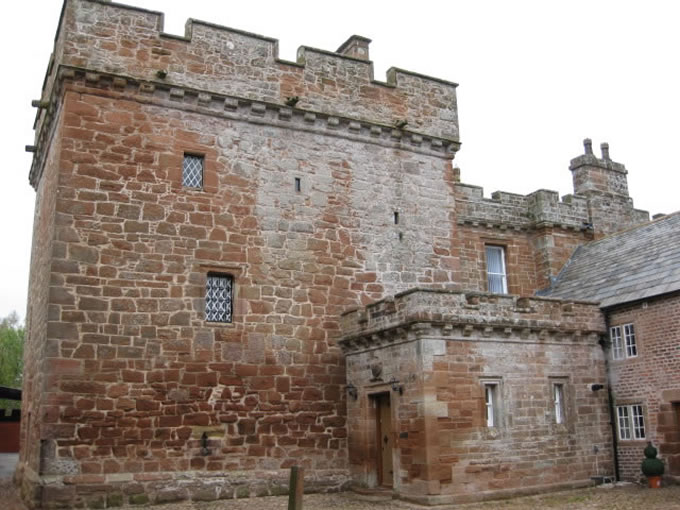
It was essential to have a strong fortified house for the protection of your family, clan, cattle and possessions; Brackenhill served this purpose well.
Brackenhill Tower (pictured left in 2010)
Probably the best preserved 16th century tower house in the North of England, its external elevations are virtually unaltered from its original state, testimony to the strength of the building, and it would have needed to be because Ritchie Graham was notorious indeed:
The Pedigree of the Mulcasters in these early years is a little weak in places but begins with Sir Richard Mulcaster (circa 1093) Lord of Torpenhow, or Torpenham, in the county of Cumberland, who was said to have been appointed by King William Rufus, in the Sixth year of his reign, to reside at Brackenhill Castle, with four other Knights to act against the Scots to preserve the Borders. The Pedigree is continued in Eleven  descents as Knights, and from them in Twelve descents more as Esquires and Gentlemen to Thomas Mulcaster, Anno 1662 and from him in two descents more to William who had two sons Richard and James. Richard (pictured left) who became Head Master of Merchant Taylors (1561) and St. Paul’s School, London. (Author of "Positions" 1581 a quaint work on education., dedicated to the Queen and styled "Positions." It was re-edited, in 1888, by Mr. R.H. Quick, with an appended biography, compiled from particulars furnished by the Rev. Richard Mulcaster, of Anglesea House, Paignton. He took great interest in dramatic art and his pupils frequently performed masques before Queen Elizabeth and her court). descents as Knights, and from them in Twelve descents more as Esquires and Gentlemen to Thomas Mulcaster, Anno 1662 and from him in two descents more to William who had two sons Richard and James. Richard (pictured left) who became Head Master of Merchant Taylors (1561) and St. Paul’s School, London. (Author of "Positions" 1581 a quaint work on education., dedicated to the Queen and styled "Positions." It was re-edited, in 1888, by Mr. R.H. Quick, with an appended biography, compiled from particulars furnished by the Rev. Richard Mulcaster, of Anglesea House, Paignton. He took great interest in dramatic art and his pupils frequently performed masques before Queen Elizabeth and her court).
Richard died April 15th 1611) and from him in two descent more to John Mulcaster of the Horse Guards Aug. 2nd 1739 (promoted to Captain when he took part in the capture of Gibraltar on July 10th 1704 by Admiral Rooke and Sir Cloudesley Shovel, assisted by British and Hessian troops)he had no children. However an intermediate by another branch in two descents more from Richard’s brother James Mulcaster of Carlisle to James Mulcaster of Allendale Town born in 1862. and from him in three descents to James (Garrigill) d. 1729
The other branches of the Cumberland Mulcasters, so far as the Langley, Allendale and Benwell Park Mulcasters are concerned, are shown in the Table, (family tree) which traces them in direct and unbroken Male descent from Father to Son, from Sir Richard Mulcaster of Brackenhill Castle Cumberland 1093. Sir Walter Mulcaster at the battle of Carlaverock against the Scots, had the leading of the Middle Ward, when King Edward Longshanks was himself present in person, also the Earl of Warren of Surr leading the rear, and Sir Henry Lacy, Earl of Lincoln the forward. This disposition of the attack by three divisions under the forenamed leaders tallies exactly with that of the Royal Minstrel who wrote the Roll of Carlaverock. Sir Robert Mulcaster grandson to the above Sir Walter married his sister Eufermia to Ralph Nevill Earl of Westmoreland and Earl Marshall of England. In the old records in the Tower of London the Pipe Rolls of Cumberland. for 1299 is a letter of bequest from Robert de Clifford, Captain of the Counties of Cumberland, Westmoreland and Lancaster to the treasurer and bursar of the Exchequer, directing them to excuse Sir William Mulcaster, Sir Thomas Felton, Robert Mulcaster and Richard Mulcaster from appearing in the Court of Exchequer, according to their summonses by reason of their attending on him, in aid and defence of the Marches. Dated at Lochmaben Castle July 4 1299.
Our lineage descends from the above mentioned James (Garrigill) through his only son John 1685-1757 (will attached) who married Frances Lucy Vickers they had four children James, John , Peter (will attached) and Robert. James was the only son to marry with children, he had three children Lucy, James (joint agent at the Langley Smelt Mills for Greenwich Hospital and the London Lead Company and wrote an account of lead smelting presented as a series of letters to the Lit. and Phil. in Newcastle and pictured left) and John (agent to Ravensworth Castle and pictured right), Lucy married so did John who had two wives Susan and Frances and five children, four girls and one boy called James 1776-1859. James married Betty Wallis they had three children John Wallis, Thomas Todd and Sarah who died in infancy. Thomas Todd Mulcaster 1813-1867 married Hannah Hodgson she gave Thomas nine children, James, John, Susannah, Elizabeth (died at infancy interned at Malaga Spain) Elizabeth Ann, Hannah, Esther (my great great Grandmother) Robert William and Thomas Todd jnr.
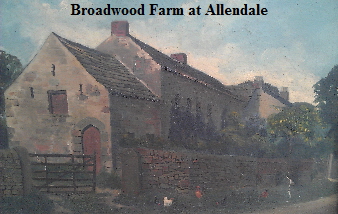 Esther 1853-1931. married my great great Grandfather John Watson, they had three children John, Maggie and Thomas Todd (my grandfather and named after Esther’s younger brother). For the most part they lived and worked the farm Broadwood Hall (Pictured right) at Allendale Northumberland, from where Thomas left to come south as a travelling salesman to meet Nanny. Esther 1853-1931. married my great great Grandfather John Watson, they had three children John, Maggie and Thomas Todd (my grandfather and named after Esther’s younger brother). For the most part they lived and worked the farm Broadwood Hall (Pictured right) at Allendale Northumberland, from where Thomas left to come south as a travelling salesman to meet Nanny.
The picture right shows John Watson (left standing) and Esther, granddad Thomas as a young man, seated left Grannie Jane Watson (nee Armstrong), Maggie (with Jean on her lap) and John’s sister Francis.
Thomas Todd Mulcaster Watson 1890-1961 in 1916 he married Florence Beatrice Spurway 1886-1973 during their married life they had five children all girls, Diana, Rosemary Jane, Margaret Esther (Peggy), Josephine Mary (my m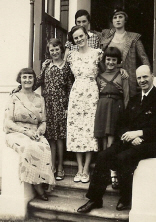 other) and Angela. other) and Angela.
The picture right shows the second generation of the Watson family from left to right - front seated Florence (Nanny), Josephine, Jane (at the back) Peggy, Diana (next to Jane) Angela (the youngest) and Thomas seated.
Josephine Mary Spurway - living: with my father Lawrence William Farr had two children myself and my sister Marilyn, thus tracing back the link to the dynasty of the Mulcaster family ancestors
|